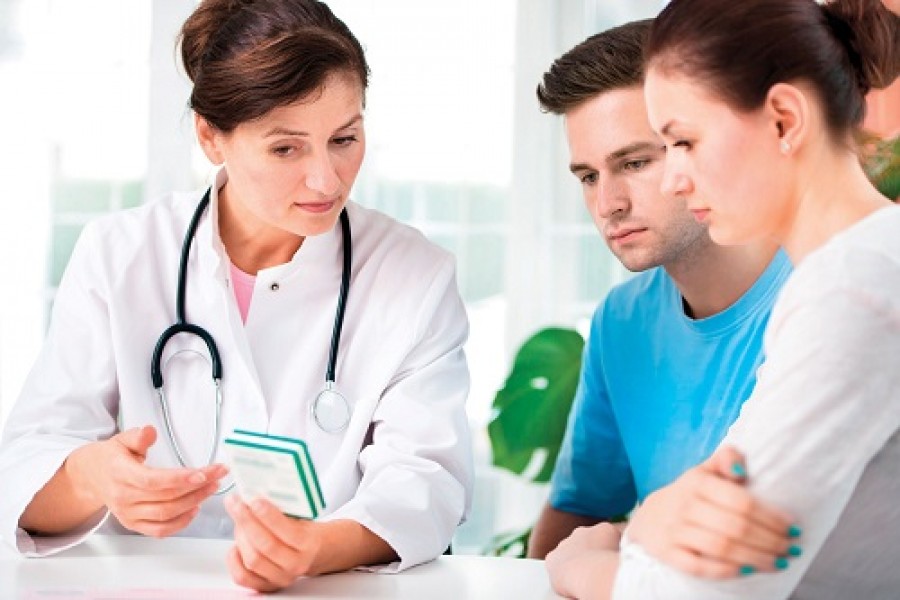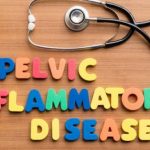Male Infertility Causes and Treatments

The Male Reproductive System
To better understand male factor infertility, let’s take a quick overview of how the male reproductive system functions and what factors contribute to fertility.
- Sperm needs to be produced: Luteinizing hormone (LH) and follicle-stimulating hormone (FSH) made by the pituitary gland trigger sperm and testosterone production by the testicles. Both hormones and testicles need to function correctly to facilitate this.
- Sperm must meet semen: As the mature over the course of 72 days, sperm wind their way toward the prostate through a delicate network of seminiferous tubules, the epididymis (where they gain strong mobility), vas deferens, scrotum, groin, and pelvis. The prostate gland and the seminal vesicles produce semen.
- There has to be enough sperm: Sperm count is the amount of sperm once it has mixed with semen and lower counts decrease the chances of fertilizing the egg.
- The sperm needs to be able to get to the egg and fertilize the egg: The male must be able to deliver the sperm to the egg. This means he should be able to sustain an erection and successfully ejaculate. Sperm has to have good movement (motility) to make it up the fallopian tube to meet the egg. The sperm’s shape (morphology) also plays an important part in penetrating the egg in order to fertilize it.
What is male infertility?
Infertility is when a couple has unprotected sex for 12 months and is unable to conceive.
Male infertility (or male factor infertility) is when both partners undergo medical testing with a GP or a fertility specialist, and reproductive concerns are found in the male partner.
Typically, infertility will be a result of deficiency in one of the above functions. However, 50% of underlying causes go undetermined.
Treatments for male infertility will be based on the underlying cause of the infertility and recommendations will be made to correct or improve fertility.
Some causes of Male Factor Infertility and Respective Interventions
Always consult your GP or fertility specialist before undertaking any fertility treatments or interventions.
Your healthcare provider will be best able to advise which interventions you may or may not be eligible for.
Below are only some causes for infertility and some of the procedures available for that specific ailment or issue.
*DISCLAIMER: Some treatments may overlap or be the available remedy for more than one condition. Often, treatments are used in conjunction. However, duplicates have been intentionally removed.
1. Hormonal deficiency
Although rarely the cause of infertility, hormonal deficiency can still attribute to about 1% of infertility cases.
The causes of the deficiency can range from lack of production of Luteinizing hormone (LH) and follicle-stimulating hormone (FSH) by the pituitary gland from birth, to benign pituitary tumours, to anabolic steroid abuse.
Hormonal disturbances or inadequacies inhibit proper functioning of the testicles.
Insufficient production of LH affects the amount of testosterone production, which may inhibit libido and even cause erectile dysfunction.
Whereas, FSH directly correlates with sperm production. Sub-fertility is when not enough sperm is produced and the chances of fertilization are decreased.
Treatments available
Male fertility drugs/hormone therapy: Human chorionic gonadotropin (hCG) alone or with a combination of other gonadotropin related fertility drugs can be used in an attempt to increase the production of sperm by stimulating production of the lacking-hormone. Male fertility treatments frequently take 1 to 2 years before significant improvement in sperm count is measurable.
2. Structural problems and/or abnormalities
Structural causes of male infertility may range from an absence of, or blockage to sperm delivery pathways.
Common obstruction or blockage problems include severed or missing connections relating to the vas deferens, previous vasectomies, and duct blockages in the epididymis or ejaculatory tracts, among others.
They may also be caused by previous infections or injuries.
Varicoceles are abnormally dilated veins located within the scrotum.
They are thought to either increase the temperature of the testicles through localised extra blood supply or pooling, subsequently compromising sperm cell count, motility, and/or morphology (shape) through excessive heat exposure.
Treatments available:
Corrective or reparative surgical procedures About 85% of vasectomies are reversible. Other blockages or obstructions can typically be resolved through minor surgeries. The aim is to correct or repair the pathway for transport of sperm. Although procedures do not guarantee nor always restore fertility, most are medically uncomplicated and inexpensive compared to other treatments. Particularly the Ejaculatory duct resection, used to treat cysts, calcification, or stones obstructing the seminal duct, can be performed in as short as 1 hour.
3. Quality of Sperm
There are varying causes of reduced production, or the production of low-moving (low-motility) or misshapen sperm.
For successful fertilization, the sperm must be vital (alive), able to swim up the female reproductive tract, AND enter the ovum.
A normal concentration of sperm with the ideal shape and good movement increase the chances pregnancy. 2/3 of men experiencing infertility attribute to sub-par sperm production or quality.
Sperm quality can be tricky to diagnose as most men affected will be able to sustain an erection and successfully ejaculate during sex.
Motility or morphology issues can go undetected as there are no visible signs or symptoms.
Motility
Sperm movement can be categorized as non-motile (not moving), non-progressive motile (moving but not getting anywhere), and progressive motile (moving and in a direction).
The female ovum secretes hormones that attract the sperm, allowing them to “know where to go”.
Total concentration of progressive motile sperm within a sample of ejaculate should be above 40%, or above 20 million.
Numbers below are a condition called asthenozoospermia.
Morphology
In addition to good movement, sperm must be of a shape conducive to penetrating the egg. 4% of a sampled ejaculate must not have morphological abnormalities for normal chances of conception.
Shape can also have an effect on sperm movement, as a bent tail or misshapen body can render the sperm’s ability to “swim”.
Treatments available:
Intracytoplasmic sperm injection (ICSI) ICSI is a type of Assisted Reproductive Technology and is the most successful treatment available for male infertility. A single sperm is isolated from a sample of ejaculate and injected into the egg. The procedure is also an effective remedy for various other fertility problems, such as erectile dysfunction, previous vasectomy, or other conditions in which sperm delivery is inhibited. The sperm cells can be retrieved from the testes or epididymis directly, or collected from a semen sample. Additional physiological testing (PICSI) may be done to specifically isolate sperm that has the attributes to detect and bind to the ovum, and facilitate better chances of insemination. ICSI is most commonly combined with Invitro fertilization, but is also used in Intrauterine insemination.
4. Sexual, unexplained, or other causes of infertility
Erectile dysfunction or ejaculate issues may be grounds of infertility.
Retrograde, premature, or failure in ejaculation prevents the sperm from entering the female reproductive system.
Or, Anti-sperm antibodies may be present, which cause the male’s immune system to attack his own sperm when it comes in contact with blood.
This can cause sperm to clump, or inhibit its motility and thus lowering the chances of the sperm fertilizing the egg.
Treatments available:
Intrauterine Insemination If the quality and quantity of sperm are not compromised and mechanical delivery is at the root of the issue, IUI may be an option. IUI is a procedure in which a semen sample is placed into the uterus. The sample undergoes special washing and removes any antibodies that could potentially inhibit its movement. Placing the semen in the uterus gives it a “head start”, which is helpful if the sperm is low-motility. Natural conception still has to take place, and the semen must swim to and fertilize the egg.
Improving fertility without medical intervention
Lifestyle modification often gets the back-seat when it comes to improving fertility. Although some causes to infertility can be hormonal, genetic or structural; external factors such as nutrition, heat exposure, drugs, alcohol, and other toxins may also impact sperm production and quality. Vitamin D has a specific correlation with movement in sperm tails. Improving your general health is not only great in the long run, but may have added benefits to fertility. As always, consult a medical professional before commencing any diet or exercise regimen.
Most Viewed
-
5 Common Methods of Contraception
Last updated On by Percy Oad -
How to Cope with Male Infertility
Last updated On by Alina -
What is the Difference Between Primary and Secondary Infertility?
Last updated On by Madison -
How to start a child-free life after infertility
Last updated On by Jacinta








